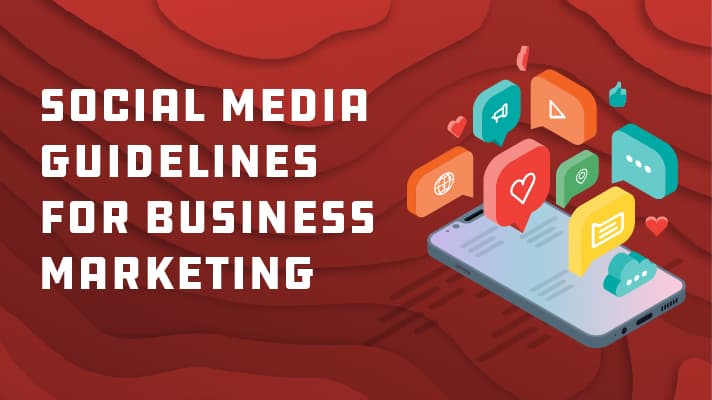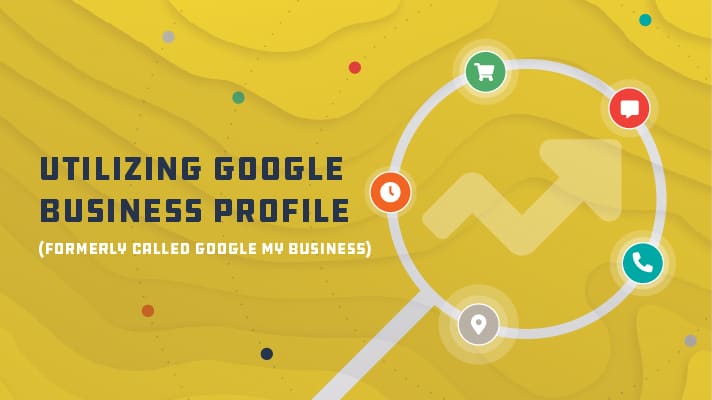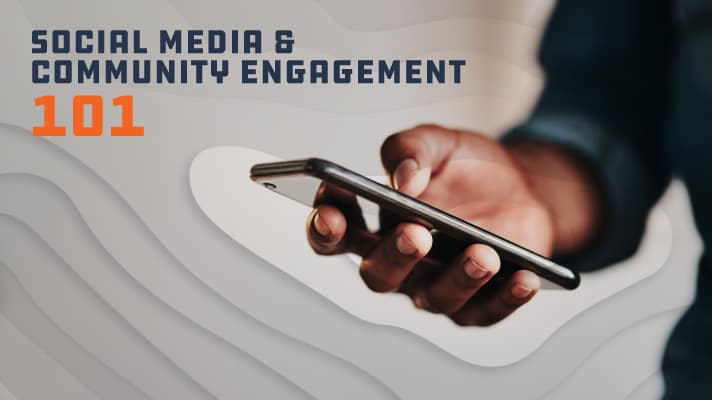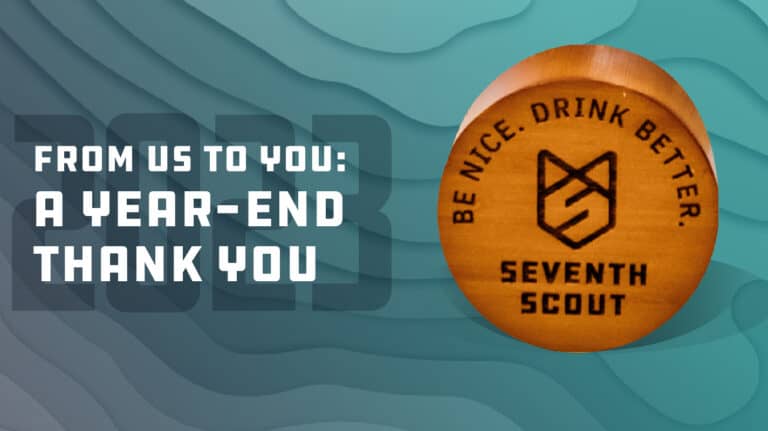Do you want to ensure your brand’s social media presence is professional and effective? With the right knowledge and techniques, it’s possible to build an engaging brand on social media while avoiding potential pitfalls. In this blog post, we’ll discuss important social media guidelines for businesses to maximize their success with the strategic use of social networks. From character length to emojis and hashtags, we tackle all the details that many overlook when thinking about social media best practices!
Identify Content Pillars
When creating social media content, it can be challenging to create unique posts for social media that highlight every aspect of your company. Defining a few categories, or “buckets” that your social media posts filter under can be beneficial. We call these categories content pillars.
Content pillars also help keep your social media feed fresh with diverse content. Your audience won’t be seeing one promotional post after another, but a promotional post, followed by a post highlighting employees, a client testimonial, and so on.
Content pillars may include products, company culture and employees, user-generated content, general company information, etc.
Examples of Social Media Posts
Gain insights into how to create successful social media posts with these inspiring examples from us and our clients. These real-life examples showcase the best way to leverage all guidelines for successful engagement on your platforms!
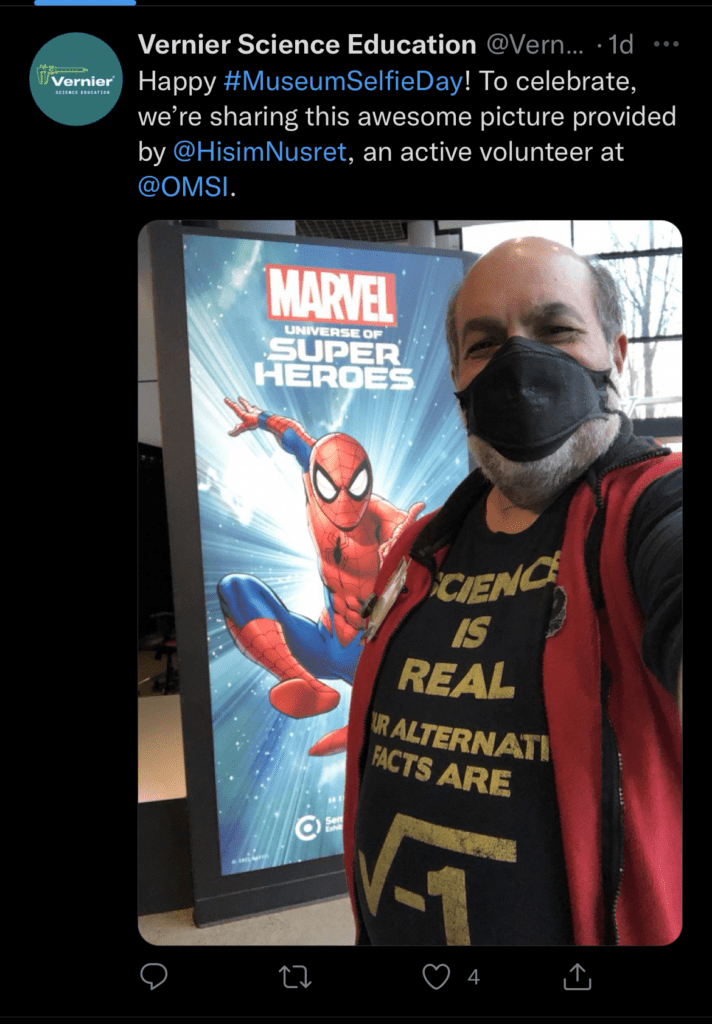
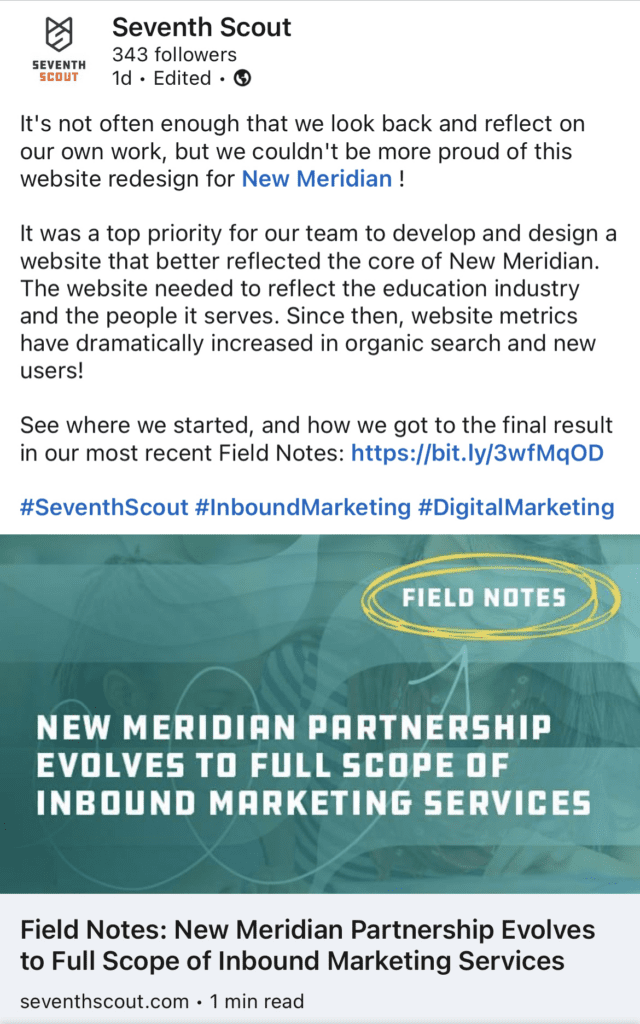

Number of Characters Per Platform
Shorter-length content is usually preferred on social media as many platforms cut off longer posts with an ellipsis, forcing users to click “See More” to expand the text and read the entire message.
Twitter gives us 280 characters. They say the sweet spot is between 240 and 259 characters, which tend to get the most likes, replies, retweets, impressions, and link clicks on average. But, you are far more likely to grab someone’s attention and encourage them to engage if you limit your tweets to somewhere between 71 and 100 characters.
Facebook is a great place to share long-form content, with the platform allowing up to 63,206 characters in regular posts. But just because you can post a lengthy status update on Facebook doesn’t mean you should. In fact, short posts tend to perform better, even on Facebook. According to a BuzzSumo analysis, the ideal Facebook post length is around 50 characters (or fewer), which tends to get the most engagement.
Paul Shapiro of Search Wilderness analyzed more than 3,000 posts and found that long-form content performed best here. Posts of 1900-2000 characters performed best.
Sprout Social shows that Instagram allows users up to 2,200 characters, but the caption is truncated after 125 characters. Ideally, posts should stay under that 125-character amount to avoid looking messy or adding unnecessary information.
TikTok
Recently, TikTok expanded its character count from 300 to 2,200. According to Hootsuite’s blog, TikTok wants this expanded character count to increase engagement, express details about your video, and make your video more searchable.
There are a lot of social media platforms out there. Are you trying to figure out which will work best for your business? We’ll walk you through how each platform best serves a business.
Universal Image Aspect
Facebook, Twitter, and LinkedIn all recommend 1.91:1 aspect ratio image. Twitter calls out 1200 x 628 pixels, and LinkedIn says 1200 x 627. Facebook is now saying 1200 x 630, but those 2 or 3 pixels won’t hurt either way. You can utilize a universal size for all three for social media posts.
Video Length
Typically, you’ll want to shoot for between 30 seconds to 60 seconds.
Facebook recommends videos that are less than one minute or stories that are less than 20 seconds in length. But that doesn’t mean long videos perform poorly. Instead, they suggest that 3+ minutes is best for episodic web series, developing stories, and live streaming.
Twitter recommends you should aim for videos around the 44-second mark — just enough time to grab users’ attention without overstaying your welcome.
LinkedIn gives us up to 10 minutes, but LinkedIn determined that videos that are 30 seconds or under boast a 200% lift in completion rates (meaning users watched the whole thing instead of clicking away).
Instagram’s feature “reels” has become very popular as a way of posting video content instead of a standard post. You have 60 seconds in a reel, but the ways to utilize those 60 seconds depends on the content you are sharing.
TikTok
TikTok currently has three different video length options, 15 seconds, 60 seconds, or 3 minutes. This platform is used for all kinds of content like storytimes which can be longer videos, or quick skits.
What about YouTube? Youtube is both a search engine, social media, and video hosting platform. The maximum upload size is 256 GB or 12 hours, whichever is less. However, YouTube Shorts are capped at 60 seconds.
Emojis
Emojis are a fun way to add some spice to your social media captions or ad copy, but they can be a double-edged sword.
Too many emojis, or emojis in the wrong spot, can alienate a huge chunk of your audience (especially the vision-impaired who rely on text-to-speech programs). If you aren’t aware of emoji meanings, you might unintentionally offend your audience.
Plus, they don’t suit all social platforms. On more professional networks, like LinkedIn, it’s best to steer clear of emoji use altogether or only use emojis related to your brand.
Emoji Rules
Keep Emoji Usage Accessible
Want your social media posts to be inclusive? Don’t go crazy with your emoji use! Text-to-speech readers will read each emoji description out loud. So if you use the emoji 🤠🤠🤠🤠, the person will hear “smiling face with cowboy hat” four times in a row.
Double Check What Your Emojis Mean
It’s important to double check the meaning of your emojis before sending them. Different cultures, regions, and contexts can interpret the same emoji differently. For example, the 🐸 frog emoji might mean something fun and playful in one context but could be interpreted as offensive in another.
Use Emojis That Match Your Brand
Emojis can be used to great effect in your marketing campaigns if you use them with intention. It may be helpful to create a brand-specific dictionary of emojis to ensure that your unique voice and message come through in every piece of content. A brand-specific emoji dictionary should include not just the meaning of each emoji but also when to use it.
Not Every Caption Needs An Emoji
Not every caption needs an emoji. If you’re talking about a serious topic, throwing in an emoji can water down the impact you want to have.
Hashtags
Shorter-length content is usually preferred on social media as many platforms cut off longer posts with an ellipsis, forcing users to click “See More” to expand the text and read the entire message.
Do:
- Use creative liberty with hashtags on Facebook instead of focusing as much on relevancy. Use a hashtag to extend the messaging of the post.
- Consider words that your potential customers may search for on Facebook. While users don’t typically search for hashtags here, like on Twitter, many search for keywords.
Don’t :
- Spend excessive time creating hashtags for Facebook posts. Use similar hashtags on Facebook that you do on Instagram.
- Use hashtags in every post on Facebook. Since it’s not the norm on the platform, it can turn off followers.
Do:
- On Twitter, individual words or short hashtags perform best here (6 characters).
- Keep a close eye on your topics on Twitter since new hashtag trends pop up quickly.
- Use native Twitter Search by clicking on Explore on the left side of your dashboard and then Trending. These hashtags are personalized for your region.
- Create a recurring hashtag that gets your followers involved.
Don’t:
- Use trending hashtags if they aren’t relevant to your posts or audience.
- Create hashtags as an afterthought. On Twitter, hashtags are the main way people find your posts and can make a significant difference in the success of your posts.
Do:
- Use hashtags related to the industry or topic of your post to help find new audiences for your content.
- Use the Discover More Hashtag button to help find other suggested hashtags to use.
Don’t:
- Use too many hashtags on posts. Aim for 1 to 3 hashtags, with five as the absolute maximum.
- Be funny or cute with hashtags on LinkedIn like you would on Facebook or Twitter. Keep hashtags professional.
Do:
- Include three to five hashtags — the number of hashtags recommended by Instagram.
- Use the ‘Follow’ hashtag feature to research potential hashtags.
- Look for ways to encourage user created content through utilizing your brand hashtags.
Don’t:
- Try to be funny with Instagram hashtags the way you might on Facebook.
- Focus on trending hashtags. Your post is likely to get lost in sea of other posts.
TikTok
Do:
- Look for TikTok-created hashtags for events.
- Look for TikTok trends and jump on the bandwagon with both content and hashtags (if it makes sense for your brand). However, move quickly!
- Use custom hashtags for user-created content. Because of the nature of the platform, TikTok is a great place to encourage followers to create user-generated content with a branded hashtag.
Don’t:
- Use only popular and trending hashtags. Because of the high content volume, your video will likely become lost in the other videos.
- Overuse #ForYouPage, or #FYP. Many people think that these hashtags increase views, but your content can easily become lost here as well.
Hashtag Rules
Carefully Choose Relevant Hashtags
You want to use relevant hashtags that potential customers will likely search for, or hashtags that add to your content.
Another key is selecting the right level of granularity — you don’t want to pick too broad of a hashtag, such as #tech, but instead a more niche one, like #cybersecruity.
Considering people often search by location, local businesses or posts promoting events may want to use location hashtags.
Create Branded Hashtags
You can use hashtags as part of your branding, such as using your company’s tagline or a hashtag for a specific campaign. Branded hashtags work well to increase engagement and build community.
Use them like you would a CTA! For example, encourage users to join the conversation by following the hashtag at the start and end of your emails or blogs or have speakers plug the hashtag in videos.
Limit The Number Of Hashtags In Each Post
Technically, you can create a Twitter post that’s just hashtags. And Instagram lets you put as many as 30 hashtags in a single post. But neither is a good idea. While each platform has a specific recommendation for the most effective number of hashtags, the suggested range is from two to five per post.
Polished vs. Real & Raw?
Sprout Social surveyed over 1,000 US consumers for the 2022 Sprout Social Index™ and found that consumers also find short-form video 2.5x more engaging than long-form video. On top of that, more than one-third of users want to see more authentic, less-produced videos from the brands they follow. Polished video production has its time and place, but research shows that consumers enjoy the quick and scrappy approach that is often taken on TikTok.
Looking to launch your business on TikTok? Learn how to build a TikTok marketing plan and start connecting with your audience.
Social media guidelines may seem like a lot to keep track of, but by following the best practices we’ve outlined here, you can create a social media strategy that works for your business in no time.
Still looking for direction? Check out our other blogs on social media and community engagement or connect with our team members to get started on the path to success (more impressions and engagement!).
